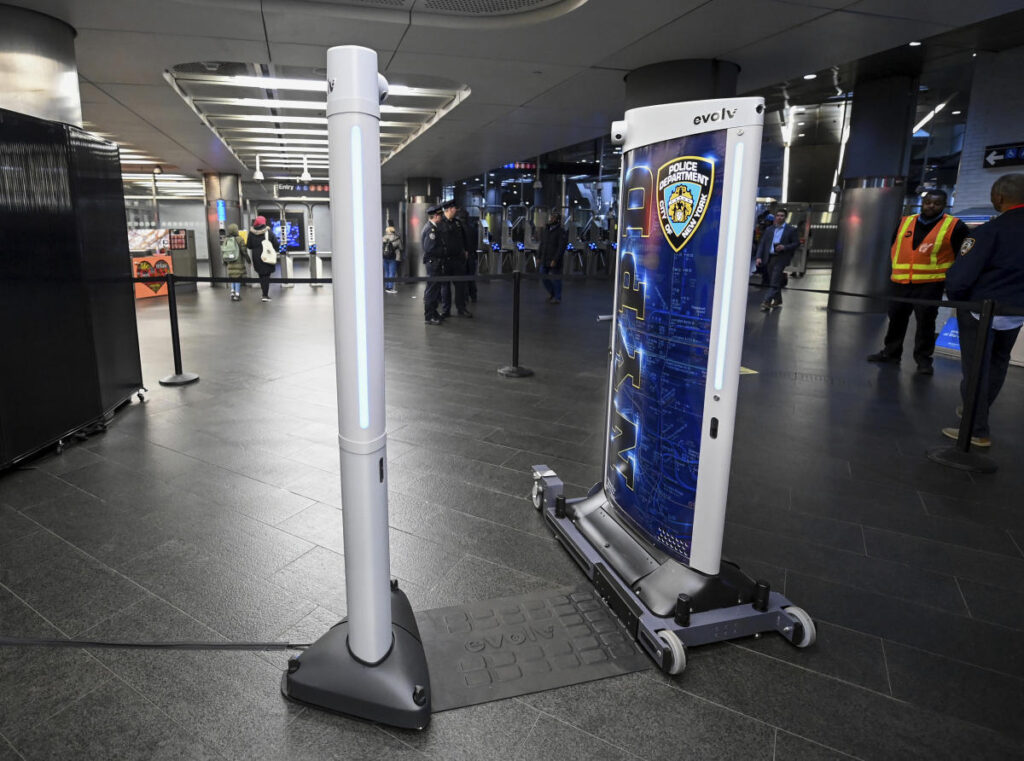In the summer of 2023, a pilot program was launched in New York City to evaluate the efficacy of AI-powered weapons scanners, manufactured by Evolv, in subway stations. This initiative was part of Mayor Eric Adams’ strategy to enhance safety within the transit system, particularly following two high-profile shooting incidents. Despite the high hopes associated with this technology, the results of the program revealed concerning flaws. According to police data, the scanners failed to detect any firearms during nearly 3,000 scans but produced over 118 false alerts, highlighting the limitations of the technology. Additionally, the scanners flagged 12 items classified as knives, though it remained unclear whether these were illegal weapons or permissible tools such as pocket knives.
The pilot program was met with skepticism from various stakeholders, including subway riders and civil liberties organizations, who raised doubts about the practicality and constitutionality of implementing such surveillance measures. New Yorkers enter the subway system through numerous entrances daily, and the sheer volume of passengers made the concept of thorough screening seem unfeasible. Critics emphasized that violent crime in the subway is relatively rare, rendering the need for such invasive technologies questionable. Mayor Adams’ announcement came on the heels of heightened public concern over safety, but many viewed the scanners’ deployment as a misguided attempt to address a problem that might not necessitate such extreme measures.
Results from the pilot program, finally disclosed by the New York Police Department, indicated that in the 30-day evaluation period, the scanners reported a false positive rate of approximately 4.29%. With 2,749 scans conducted at 20 stations, the figures raised significant questions about the system’s reliability. Notably absent from the release were important details such as the duration of each screening, the number of police officers manning the devices, and the proportion of riders who opted out of the search. These omissions have fueled further scrutiny of the program and the decision-making process behind its implementation.
Despite the glaring inadequacies identified during the pilot, Mayor Adams has continued to advocate for the use of Evolv scanners, emphasizing their potential role in other public spaces, including schools. This support comes at a time when Evolv is grappling with legal challenges, including federal investigations into its marketing strategies and a class-action lawsuit alleging that company executives misrepresented the effectiveness of their devices. The ongoing legal troubles have cast a shadow over the firm’s credibility, raising further doubts about how the technology should be integrated into public safety efforts.
Civil rights advocates were quick to respond to the disappointing results of the pilot program. The Legal Aid Society criticized the testing outcomes as a “failure,” arguing that they provided concrete evidence against the technology’s implementation. They urged city officials to reconsider the use of such scanners, given the problematic history associated with Evolv and the negative feedback received from the public. This pushback reflects broader concerns about surveillance measures and their implications for civil liberties, especially in urban environments where privacy and safety must be carefully balanced.
Overall, the pilot program testing AI-powered weapons scanners in New York City subway stations has reignited a contentious debate surrounding public safety, technology, and civil rights. The stark contrast between the program’s ambitious intentions and its lackluster execution raises essential questions about the effectiveness and ethical implications of deploying AI in public safety contexts. As the city evaluates the future of such technologies, the results of this trial could serve as a critical gauge for policymakers balancing innovative approaches to crime prevention with the need to protect individual freedoms and rights.

